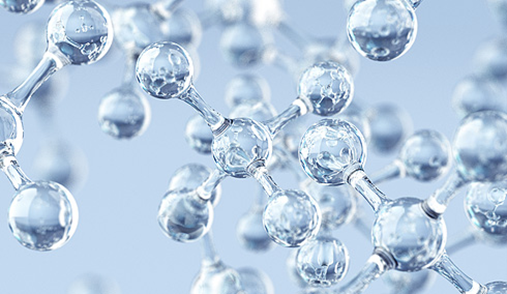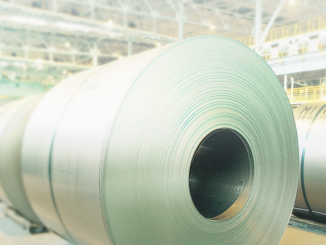
Interested in getting the benefits from a world-renowned research and development company that invests over $1 million per hour, without actually having to spend $1 million per hour? Well, Toyota has just the program for you. It covers a broad array of technologies, one of them is nanomaterial synthesis of strong rare-earth-free magnets that its researchers developed for use in hybrid and electric vehicles and automobile components such as actuators and motors.
Called Toyota IP Solutions, the program is intended to help promote and serve as an access point for the licensing of patents to US and global companies. Begun in December 2019 with four portfolios, the program has grown to include many others now.
“As one of the world’s leading patent providers, our intellectual property spans a wide range of technologies. We’re excited that the various technologies now being offered via the Toyota IP Solutions program are not limited to the automotive industry and many can be applied to other products,” said Chris Reynolds, chief administration officer of manufacturing and corporate resources for Toyota Motor North America, when the program was introduced.
Nano-Material Synthesis, one of the four original portfolios, covers novel compositions and methods which provide for quick and cost-effective production of high purity nanomaterials of virtually any chemical element or alloy. The technology can be applied to the synthesis of extremely high-quality electrodes and strong rare-earth-free magnets.
In recent discussions with Toyota executives, Magnetics Magazine explored aspects of the program that apply to magnetic technology and the status of the program. Our sources for this update were Michael Rowe, principal scientist with Toyota Research Institute North America, and Fred Mau, intellectual property counsel, Toyota Motor North America.
“This technology was developed by Toyota through its R&D work on next generation magnetic materials to make hybrid and electric vehicle motors and power systems,” said Rowe. “We created some prototypes using this technology and found applicability to lightweight materials and electrochemistry like batteries and catalysts. We’re excited by our discoveries and want to offer it to others.”
Basically, how does the technology work?
“As many scientists know, there are great end-user advantages of nanomaterials, but many do not understand the challenges to create them,” explained Rowe. “There is an abysmally small amount of universality in nanomaterial production. Every time you need to make a new type of nanomaterial, especially as they become more complex, you almost have to reinvent the wheel in the lab and come up with a new recipe.”
“We came up with nanomaterial synthesis technology that is a far more universal means of producing nanomaterials,” he continued. “It is much more akin to modifying a chocolate chip cookie recipe than actually coming up with a new recipe every time. Further, our process scales up in bulk easily because it’s a mechanically based system, instead of liquid solution-based systems. The result is scale and versatility, much faster than you would normally realize in any R&D environment. What really amazed us as scientists was the vastness of what we can cover, almost the entire periodic table. We get scope, versatility and quantity, all in a neat little package.”
What are examples of products that might be achieved by licensing?
“Nanomaterials are used in many different industries from electronics to personal care products to lightweighting materials,” explained Mau. “Other applications include aerospace, who are always looking for the next great thing, and possibly the medical industry, depending on how certain treatments come out of the research field. Anywhere you need high performance, high quality composite materials or additives would be right for this technology. A lot of the current nanomaterials are designed by very specific production methods. Here, we have a means of producing almost any nano material, or variation thereof, on the periodic table by using essentially the same method and precursor materials. This is a process that can be used to make almost anything that you want in a very cost effective and efficient manner.”
What is the status of the program, and has it been licensed yet for magnetic applications?
“Our licensing program is open for business,” replied Mau. “It was initially launched in December of 2019 with four portfolios, and we now have 28 portfolios available including the nanomaterial synthesis technology that we have been discussing here. We are having continuing discussions with several potential partners across a number of technical disciplines. There is nothing I can disclose now, but we expect to have a few announcements this year.”
“Companies that are interested in licensing the nanomaterial synthesis technology or want to explore what else Toyota has available for licensing can visit the Toyota IP Solutions website and contact us through the portal there. People should take a look because they would be amazed by the breadth of technologies that we have available.”
In describing the nanomaterials synthesis portfolio, Toyota also gives this explanation: Starting with any zero-valent element from Groups 2 through 16 of the periodic table (such as manganese, tin or even carbon), a versatile reagent can be formed that provides a gateway to the creation of essentially any nanoparticle. The resulting complex can then undergo a simple transformation to the desired nanoparticle.
Initially, the technology was developed by Toyota researchers for use in various automobile components incorporating magnetic materials such as power locks, power windows, power seats, electric motors, power electronics and more. But it can be used in any application that requires the use of nanomaterials. Potential licensing categories include handheld electronics, medical devices, water purification systems, industrial contamination remediation, magnets for actuators and motors, lightweight structural materials.
Another portfolio in the program, Electronics Thermal Management, covers cooling strategies that can be integrated into a power-dense electronics system to quickly control and dissipate the heat generated by the system. These patented materials, designs and methods can be incorporated into many types of systems, particularly small form factor systems, to decrease the overall heat load. As a result, more power-dense and efficient systems can be created.
For more info, see www.toyotaipsolutions.com.



